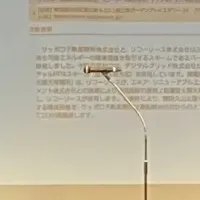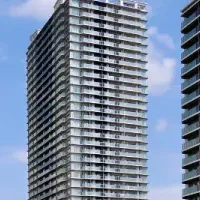
Environmental Hazards in Wildfire Recovery: LightBox Report Reveals Hidden Risks
Uncovering Environmental Hazards in Southern California's Wildfire Recovery
In light of the devastating wildfires that swept through Southern California in January, LightBox, a pacesetter in geospatial intelligence and property data solutions, has released a groundbreaking report that sheds light on previously unexamined environmental risks in affected areas. The report, titled "The Environmental Crisis After Wildfires: Unseen Threats in Recovery," represents a vital resource for communities engaged in recovery efforts.
The Findings of the Report
The report carefully analyzes the environments impacted by the Palisades and Eaton fire incidents. Some of the most startling findings include a staggering number of damaged structures and potential hazardous contamination.
In the Palisades zone alone, over 10,000 structures were identified as impacted, which includes more than 200 businesses. Alarmingly, around 700 properties in this area were flagged for possible contamination due to hazardous materials, with 150 of those suspected of having underground storage tanks (USTs). Similarly, in the Eaton area, more than 9,000 structures were reported, encompassing 175 businesses, with 600 properties identified for potential hazardous contamination, including 75 USTs.
Why Traditional Risk Models Fall Short
The report's author, Richard W. White, who serves as the director of Research and Development at LightBox, emphasizes a critical flaw in conventional risk assessment models. These models predominantly rely on historical land use records and existing property documentation, which often overlook emerging hazards that can surface following a wildfire. Highlighting this gap, the report references CA HAZNET, a database which recorded over 40 entries related to asbestos waste within the zones impacted by the wildfire events.
As Caroline Stoll, LightBox’s general manager of Data and Analytics, articulated, “This data changes everything. If property documents show no asbestos risk, but waste tracking indicates otherwise, it has substantial implications for cleanup and rebuilding initiatives, ultimately minimizing potential public health threats.”
A Call for Data-Driven Awareness
The LightBox report robustly argues the necessity for a more data-centric approach to tackle concealed environmental threats, especially in planning rebuilding efforts. To assist communities in this crucial phase, LightBox has released its Wildfire Response Map at no cost for public agencies, environmental engineers, and communities. This innovative tool offers real-time environmental risk assessments, significantly reducing risks associated with reconstruction processes that could jeopardize lives and lead to major financial losses.
Zach Wade, a Data Scientist at LightBox, amplifies this sentiment by stressing that communities should not solely rely on outdated or incomplete data. “Real-time environmental risk mapping is essential to avoid costly reconstruction errors that could threaten lives and perpetuate significant damages in the future,” Wade noted.
About LightBox
LightBox stands at the forefront of offering advanced geospatial intelligence and property data solutions. With an unwavering commitment to innovation, LightBox equips clients with the necessary tools to navigate complex decisions, mitigate risks, and enhance productivity throughout real estate operations. Serving a diverse clientele exceeding 30,000 customers, LightBox's commitment to fostering industry connections and promoting excellence is well recognized across commercial and governmental sectors, including brokers, developers, investors, and environmental advisors.
To delve deeper into LightBox’s solutions and explore the findings of their new report, visit www.LightBoxRE.com.
Conclusion
As recovery efforts continue in the wake of the recent wildfires, stakeholders must heed the insights provided by the LightBox report in order to prioritize safety and make informed decisions during the rebuilding process. By embracing a data-driven approach and understanding the latent risks that accompany wildfire recovery, communities can work towards a more resilient future.
Topics Environment)










【About Using Articles】
You can freely use the title and article content by linking to the page where the article is posted.
※ Images cannot be used.
【About Links】
Links are free to use.